The Brazilian Society of Dermatology ( SBD ) found that, in Brazil, the incidence of stretch marks among women is from 40% to 70%, while in men it is lower, around 25% . Therefore, the possible clientele to treat this problem in your aesthetic clinic is wide, but do you know which treatments for stretch marks are the most appropriate for each type?
There are three stages of stretch marks that need to be treated differently to achieve the most effective and satisfying results: red or purplish ones, superficial narrow white ones, and deep wide white ones.
Knowing this, there are still several treatments on the market to combat them, however, as some are more difficult to treat, they require more appropriate procedures.
Therefore, by offering the correct treatment in your aesthetic clinic, it is possible to further increase the satisfaction and loyalty of your customers, further multiplying your sales of Home Care products for prevention.
Therefore, to find out which treatment to recommend on each occasion, keep reading.
Treatments for red and purple stretch marks
As you know, red and purplish stretch marks are the easiest to treat, since they are recent and the tissue has not yet been completely damaged, with some blood circulation to the area.

Intense pulsed light
For the treatment of red stretch marks, intense pulsed light is an excellent option to stimulate collagen cells and reorganize the fibers. However, the role assumed by this procedure is rather supportive, the use of others such as peelings or acids being recommended.
That said, the treatment usually begins with the application of intense pulsed light, in order to promote the regeneration of skin structures, as well as help in the treatment of dilated vessels that usually give a reddish or purplish appearance.
Subsequently, peelings or acids can be applied to further optimize the action of light.
They are necessary from 3 to 6 sessions with an interval of one month, depending on the results presented. That being said, skin tone tends to become 30-80% more even, and stretch marks become increasingly finer.
In addition, your client’s skin will be more sensitive, with the possibility of flaking five to ten days after treatment, and it is necessary to avoid sun exposure in the region for a month.
Infrared
In this case, a glass-tipped device fires infrared rays that heat the deeper layers of the skin, thus causing retraction and increasing the production of fibroblasts, the famous cells that form collagen and elastin.
To obtain good results it is necessary to apply at least 3 sessions, ideally one per month. Your client may experience slight discomfort, so it is important to explain this ahead of time before the procedure, even if it is totally bearable.
In addition, the appearance of the lines improves between 40% and 80% after 3 months of treatment, depending mainly on the width of the stretch marks, which also tend to have a more intense color the first few days, gradually lightening. little.

Intense Pulsed Light and Vitamin C
This treatment is a bit more invasive, requiring the application of 22% concentrated vitamin C through a fine needle into the superficial layer of the skin.
Subsequently, the active will act directly on the vessels that give the reddish color to the stretch marks, stimulating the approximation of the edges and making them less and less visible.
Then, for about half an hour, the intense pulsed light equipment comes into action, again with the use of a pointer that shoots energy that promotes contraction of the dermis, further helping to reduce the lines.
About 10 applications of vitamin C are required, one every 15 days and another 4 applications of pulsed light at intervals of 3 weeks. It is also necessary to explain in advance that the bites are usually a bit uncomfortable and leave small bruises for 3-5 days.
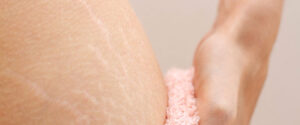
Treatments for white, superficial and narrow stretch marks
As you already know, with the passage of time, the lines gradually lose their tonality, acquiring a whitish color and appearance.
Therefore, treatments for white stretch marks need to be intensified a little more to achieve good results.
Radio frequency
In this treatment, the deepest layer of the skin is heated by being hit by the waves fired from the tip of the radiofrequency equipment, which must be done for half an hour.
In this way, contraction and increase of collagen fibers occur, in addition to the reorganization of the supporting tissues and approximation of the edges of the stretch marks.
Between 8 and 16 radiofrequency sessions are necessary, however, from the 4th session the appearance of stretch marks is reduced by up to 60%.
In addition, the treatment is practically painless, it is enough to heat the area for a few minutes, but it is important to contraindicate sun exposure for a week.
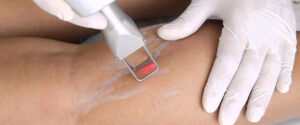
Fractional laser
In this treatment, light rays are directed directly at the stretch marks, penetrating just over 1 millimeter deep into the skin.
In this way, the energy released will stimulate the production of collagen and elastin, which helps to preserve most of the cells, in addition to accelerating the healing process.
A single fractional laser session will promote an improvement of up to 30% of the lines, reaching a reduction of up to 80% of stretch marks at the end of the treatment.
However, to achieve this result, 4 to 5 sessions are needed, with intervals of one month between them.
It’s also important to remind your clients that the heat generated by the laser can cause some discomfort, but this is alleviated by the device’s sapphire bridge, which helps cool the skin.
Copper peeling and intradermotherapy
The first step in this treatment for stretch marks is to perform the peeling, which will cause a micro exfoliation and stimulate the production of elastin and collagen.
Therefore, the copper will react with an enzyme in the skin responsible for the production of melanin, turning the stretch marks back to the same tone as the rest of the body.
After this stage, a group of substances is injected into the most superficial layer of the skin, which will rebuild and restore the elasticity, firmness and hydration of the skin.
Fifteen sessions are required, with intervals of one week between each one. However, the result begins to appear on average from the 5th session, reaching 70% to 80% of the final results.
As with other treatments, you need to make it clear to your client that the bites are somewhat painful and can leave the skin sensitive. Therefore, it is recommended to avoid tight clothing, exercise and use body creams and oils on the day of treatment.
Also, you should avoid sun exposure for at least a month.
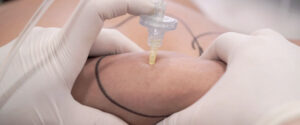
Carboxytherapy
Carboxytherapy consists of the use of equipment that injects carbonic gas into the subcutaneous tissue, thus seeking to dilate the blood vessels to stimulate the formation of collagen, filling the stretch marks from the inside out.
About 12 sessions are required, ideally one per week. In addition, it is already possible to observe the result from the second month, reaching up to 50% improvement in the appearance of stretch marks at the end of the treatment.
Each session lasts approximately 15 minutes, with painful but totally bearable bites. However, it is also important to advise your patients that when a vessel is affected, the region may turn purple for 3-5 days, and it is necessary to stay out of the sun during this period.
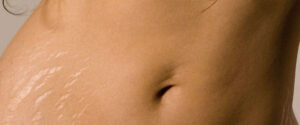
Treatments for wide and deep white stretch marks
When white stretch marks become wide and deep, it is necessary to offer even more invasive stretch mark treatments to stimulate the filling of the lines from the inside out, seeking to achieve better results.
Fractional laser and subcision
This type of treatment begins with 2 or 3 sessions of fractional laser, which will perform microperforations in the skin, destroying and heating the support fibers.
In this way, it helps to improve the texture and smooth the skin. When the bruising disappears (about 15 days later), an incision is made.
Subcision is an outpatient surgical method that uses a sharp-edged needle to detach the deep dermis, seeking to traumatize it. Therefore, this procedure can only be performed by a specialized doctor.
Therefore, look to partner with dermatologists or plastic surgeons in your region to perform this treatment.
The subcision, then, will stimulate the formation of collagen and will partially recover the stretch mark, without the need for stitches, since the cut is small.
Finally, 3 to 5 laser sessions are required, with intervals of 15 days between each one, and 1 to 2 subcision sessions, with intervals of 60 days between each one.
A reduction in the width and depth of the stretch marks is expected, with the result appearing between 30 and 60 days after the start of the treatment, collagen regeneration time.
Side effects include swelling caused by the laser in the first 24 hours, as well as bruising for two weeks. After subcision, the site is sore and bruised for up to a week, and exercise is prohibited for 3 days and sun exposure for 1-2 months.
The offer of the so-called ozone therapy for the treatment of stretch marks is contrary to health legislation, being prohibited and not regulated by Anvisa, due to the lack of scientific tests and evidence of safety and efficacy.
For this reason, the use of ozone therapy machines in aesthetics is only regularized in the cleanliness and asepsis of the skin.
Therefore, opt for legal treatments with proven effectiveness for the treatment of your clients.
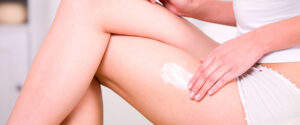
What to indicate for the prevention of stretch marks?
In addition to carrying out treatments, your aesthetic clinic can also be sought after to carry out anti-stretch mark prevention procedures. Therefore, it is important to know how to educate your customers on how to prevent it, and indicate the appropriate products.
Among the main indications for the prevention of stretch marks, especially in cases of pregnancy, hormonal problems, adolescence and weight changes, we can highlight:
- Constantly hydrate the body with moisturizing creams and lotions, which should be rich in emollients based on collagen and elastin, to improve the skin’s resistance to fiber breakage.
- Drink an average of 2 liters of water a day.
- Practice physical exercises regularly.
- Avoid eating sweets and fats in excess.
- Maintain a balanced and nutritious diet with fresh fruits and vegetables. In addition, the vitamin C present in food is an antioxidant and helps in the formation of skin proteins.


